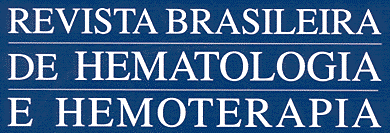IMAGES IN CLINICAL HEMATOLOGY
Comet assay in myelodysplastic syndromes
Paulo Florentino Teixeira Neto; Ronald Feitosa Pinheiro; Romélia Pinheiro Gonçalves
Universidade Federal do Ceará - UFC, Fortaleza, CE, Brazil
Corresponding author Corresponding author: Paulo Florentino Teixeira Neto Universidade Federal do Ceará - UFC Laboratório de Hematologia Rua Capitão Francisco Pedro, 1210 Rodolfo Teófilo 60430-370 Fortaleza, CE, Brazil paulimneto@gmail.com
The comet assay (single-cell gel electrophoresis) has been established as a simple, rapid, flexible and sensitive method of detecting DNA damage in single cells(1,2). Cells embedded in agarose on a microscope slide are lysed with detergent. Electrophoresis at high pH results in structures resembling comets, observed by fluorescence microscopy; the intensity of the comet tail relative to the head reflects DNA damage(2). The lesion of each cell is quantified according to the comet tail length as class 0 (no tail) to 4 (almost all DNA in tail)(3). Due to genetic instability of myelodysplastic syndromes, the comet assay can be useful to detect DNA lesion intensity and correlate this with cytogenetic abnormalities. Figure 1 illustrates a cell from a healthy 46-year-old control individual classified as comet class 0. Figures 2A - E illustrate cells from a 61-year-old patient with myelodysplastic syndrome (47, XY, +8) classified as comet class 0, 1 and 2.
Submitted: 4/18/2012
Accepted: 5/2/2012
Conflict-of-interest disclosure: The authors declare no competing financial interest
- 1. Singh NP, McCoy MT, Tice RR, Schneider EL. A simple technique for quantitation of low levels of DNA damage in individual cells. Exp Cell Res. 1988;175(1):184-91.
- 2. Collins AR, Dusinska M, Franklin M, Somorovská M, Petrovská H, Duthie S, et al. Comet assay in human biomonitoring studies: reliability, validation, and applications. Environ Mol Mutagen. 1997;30(2):139-46.
- 3. Collins AR. The comet assay for DNA damage and repair: principles, applications and limitations. Mol Biotechnol. 2004;26(1):249-61.
Corresponding author:
Publication Dates
-
Publication in this collection
06 Sept 2012 -
Date of issue
2012



